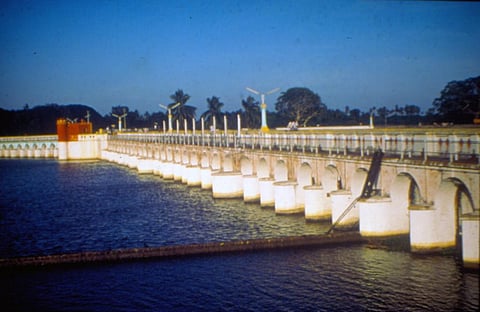

The southwest monsoon 2022 has advanced into north-west India (as of July 1) but water levels in India’s important reservoirs has not improved. Available live storage in the country’s 143 reservoirs monitored was only 28 per cent of their capacity, the Central Water commission (CWC) said June 30.
The level was similar to last week, but down since the beginning of June.
Levels in at least 101 of the 143 monitored reservoirs was at 40 per cent capacity or less. This has resulted in below-normal storage in at least eight states. The highest gaps were in:
Storage was at zero in at least five reservoirs — one each in Uttar Pradesh, Uttarakhand, Maharashtra, Madhya Pradesh and Gujarat. These are also states with some of the highest departures in cumulative rainfall, according to data from India Meteorological Department (IMD).
More water is lost to evaporation as the summer peaks, resulting in a dip in water levels. This raises concerns about meeting the daily water needs of cities as well as for summer crops sowed in February or early March and harvested by May-June.
Storage was better in the southern states. The 40 reservoirs in Andhra Pradesh, Telangana, Karnataka, Kerala and Tamil Nadu were at 35 per cent storage capacity. The eastern region was at the lowest (17 per cent), followed by the northern region (23 per cent), western (24 per cent) and central India (28 per cent).
Storage at many river basins were also below their 10-year averages. Sabarmati’s storage declined to 5.76 per cent on June 30 from from 7.39 per cent (June 2); the river is staring at a departure of almost 70 per cent from normal.
The Indus basin has recorded a negative departure of 37.53 per cent per cent while for Mahi it was 28 per cent.
Ganga basin has just 34.92 per cent storage — a decline from 37.9 per cent a month ago; Narmada has 20 per cent, Godavari has 29 per cent, and Krishna has 26 per cent of its capacity.
The crisis of water storage is directly linked to water availability, which is influenced by climate change. Water storage in the river basins gravely affects the socio-economic conditions of the regions dependent on the rivers for water supply.